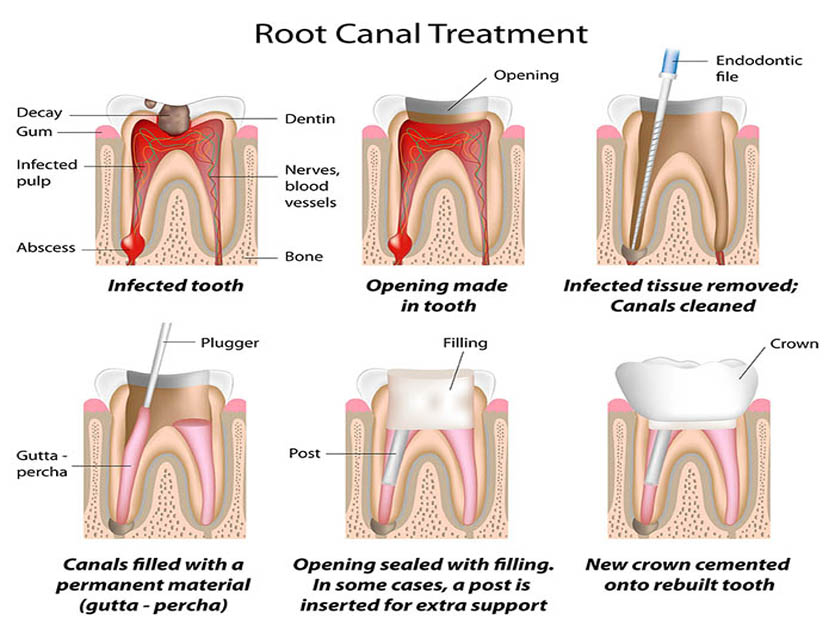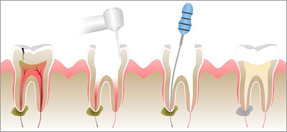


Endodontics is the dental study that specializes in the causes, diagnosis, prevention, and treatment of diseases and injuries of the human dental pulp or the nerve of the tooth.

Root Canal Procedure
The root canal is most notorious procedure in dentistry and the most common procedure relating to endodontic dentistry.
If a tooth becomes infected the cause of the infection is often related to the nerves in the root of the tooth. Infected nerves must be removed. If the infected nerve is left untreated, nerve and surrounding tissue will abscess. An abscess is a serious condition affecting the jaw which may result in bone loss.
Prior to the procedure, the area numbed with a local anesthetic. We will create an opening into the canal by drilling into the tooth. From this vantage, we are able to clean the tooth canal and remove infected tissue. After the infection has been removed, the space if filled with a sealant called gutta percha.
The reputation of “Root canal” depicts a scary, painful procedure, and is no term a dental patient wants to hear, but the benefits of the procedure and advances in dental technology have taken the “scare” out of the process.
We recommend fitting a tooth that has undergone a root canal with a crown. A crown can provide a natural appearance and will also make it much more likely that the root canal is successful.
We use local anesthetics and properly administer pain medication, allowing the procedure to be performed with little to no pain in most cases. The soreness that follows is no more than that of less obtrusive procedures. The advances in endodontics have improved results to the point that over the counter painkillers are usually enough to relieve any after procedure pain.
After your root canal, you will experience relief from pain caused by the infection, and in a very short time you can enjoy all the foods you love without any pain from heat, cold, or biting too hard.
Endodontic Retreatment
With proper care, most teeth that have had endodontic (root canal) treatment can last as long as other natural teeth. Root canals performed by endodontists (root canal specialists) have a 95% success rate. In some cases, however, a tooth that has received endodontic treatment fails to heal. Occasionally, the tooth becomes painful or diseased months or even years after successful treatment.
Why do I need retreatment?
As occasionally happens with any dental or medical procedure, a tooth may not heal as expected after initial treatment for a variety of reasons:
For example:
New decay can expose the root canal filling material to bacteria, causing a new infection in the tooth. A loose, cracked or broken crown or filling can expose the tooth to a new infection. A tooth sustains a fracture. Retreatment is performed in two visits and involves the following:
 |
 |